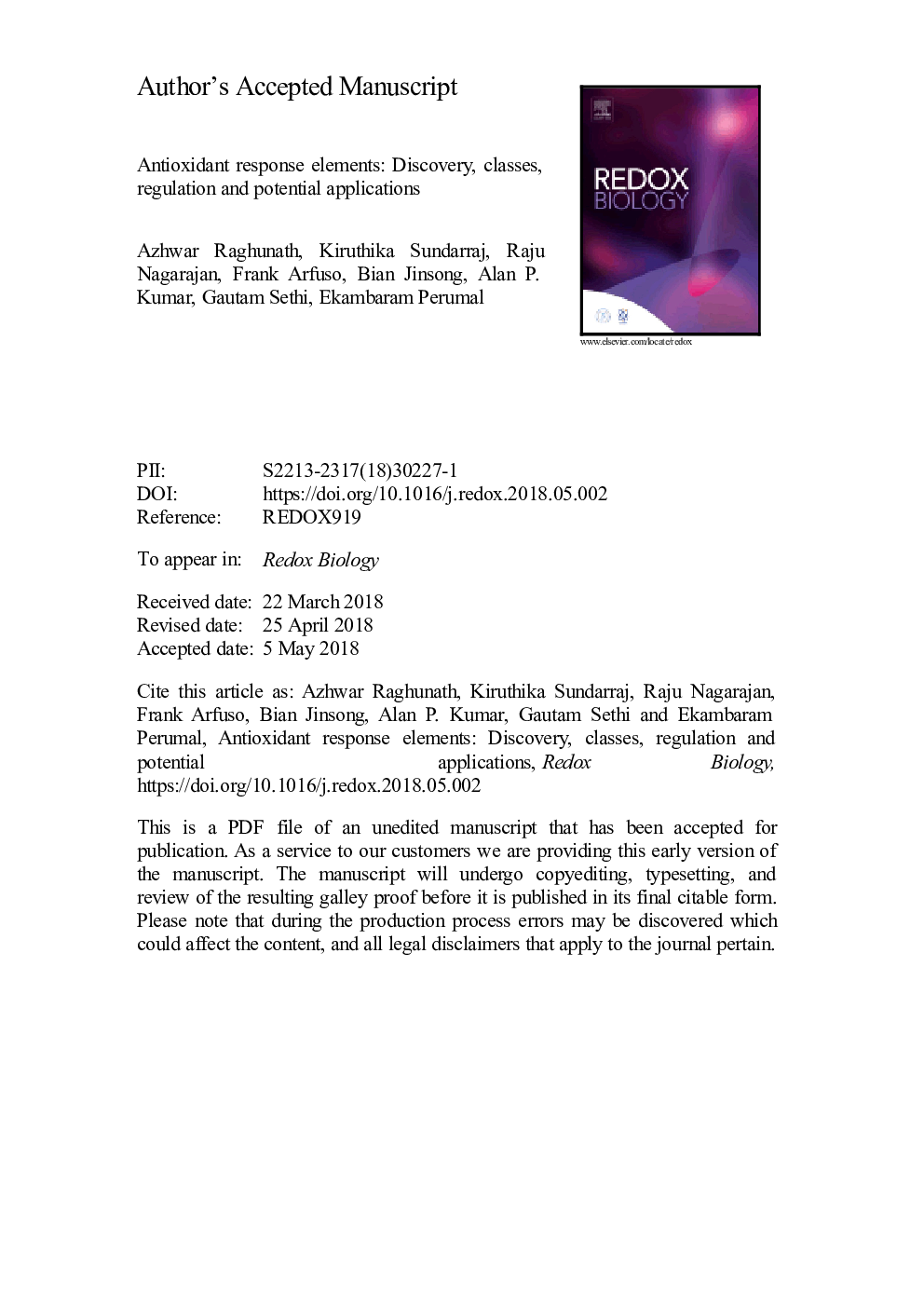| Article ID | Journal | Published Year | Pages | File Type |
|---|---|---|---|---|
| 8286382 | Redox Biology | 2018 | 61 Pages |
Abstract
Exposure to antioxidants and xenobiotics triggers the expression of a myriad of genes encoding antioxidant proteins, detoxifying enzymes, and xenobiotic transporters to offer protection against oxidative stress. This articulated universal mechanism is regulated through the cis-acting elements in an array of Nrf2 target genes called antioxidant response elements (AREs), which play a critical role in redox homeostasis. Though the Keap1/Nrf2/ARE system involves many players, AREs hold the key in transcriptional regulation of cytoprotective genes. ARE-mediated reporter constructs have been widely used, including xenobiotics profiling and Nrf2 activator screening. The complexity of AREs is brought by the presence of other regulatory elements within the AREs. The diversity in the ARE sequences not only bring regulatory selectivity of diverse transcription factors, but also confer functional complexity in the Keap1/Nrf2/ARE pathway. The different transcription factors either homodimerize or heterodimerize to bind the AREs. Depending on the nature of partners, they may activate or suppress the transcription. Attention is required for deeper mechanistic understanding of ARE-mediated gene regulation. The computational methods of identification and analysis of AREs are still in their infancy. Investigations are required to know whether epigenetics mechanism plays a role in the regulation of genes mediated through AREs. The polymorphisms in the AREs leading to oxidative stress related diseases are warranted. A thorough understanding of AREs will pave the way for the development of therapeutic agents against cancer, neurodegenerative, cardiovascular, metabolic and other diseases with oxidative stress.
Keywords
PI3KCRENAPATF4TBHQCATSNPsNCBIBLAeGFPtPANrf2GSHGSTChIP-SeqHO-1CTDPWMPHEAHEAP-1MAPTNRF1VCPHRENTDBTBNQO1XREtert-butylhydroquinonePYRHemeoxygenase-1β-NF3-methylcholanthreneSMAFβ-TrCPHRD1FTLNQRNAD(P)H:quinone reductaseTPA-responsive elementB[α]PKeap1/Nrf2/ARE pathwayCNC-bZIPferritin light polypeptideHBE1keap1EpREPMA3-MCNAD(P)H quinone dehydrogenase 1Phosphatidylinositol-4,5-bisphosphate 3-kinasePHxROSβ-naphthoflavoneβ-lactamaseAryl hydrocarbonFluorescence resonance energy transferFRETBenzo[a]pyreneBACHOxidative stresschromatin immunoprecipitation sequencingHareC-terminal domainN-terminal domainTREcytochrome P450 1A1endoplasmic reticulumantioxidant response elementsxenobiotic-responsive elementantioxidant response elementelectrophile-responsive elementcyclic AMP responsive elementactivating transcription factor 4Position weight matrixMaresMetallothioneinNational Center for Biotechnology Informationknock-outNaphthaleneAREPartial hepatectomyPAHsPolyaromatic hydrocarbonsnuclear envelopeβ-transducin repeat-containing proteinValosin-containing proteinactivator protein-1enhanced green fluorescent proteinKelch-like ECH-associated protein 1microtubule-associated protein tauSingle nucleotide polymorphismsPhenanthrenePyreneAntioxidant geneschloramphenicol acetyltransferaseGlutathioneglutathione S-transferaseReactive oxygen speciesaryl hydrocarbon receptor
Related Topics
Life Sciences
Biochemistry, Genetics and Molecular Biology
Ageing
Authors
Azhwar Raghunath, Kiruthika Sundarraj, Raju Nagarajan, Frank Arfuso, Jinsong Bian, Alan P. Kumar, Gautam Sethi, Ekambaram Perumal,
